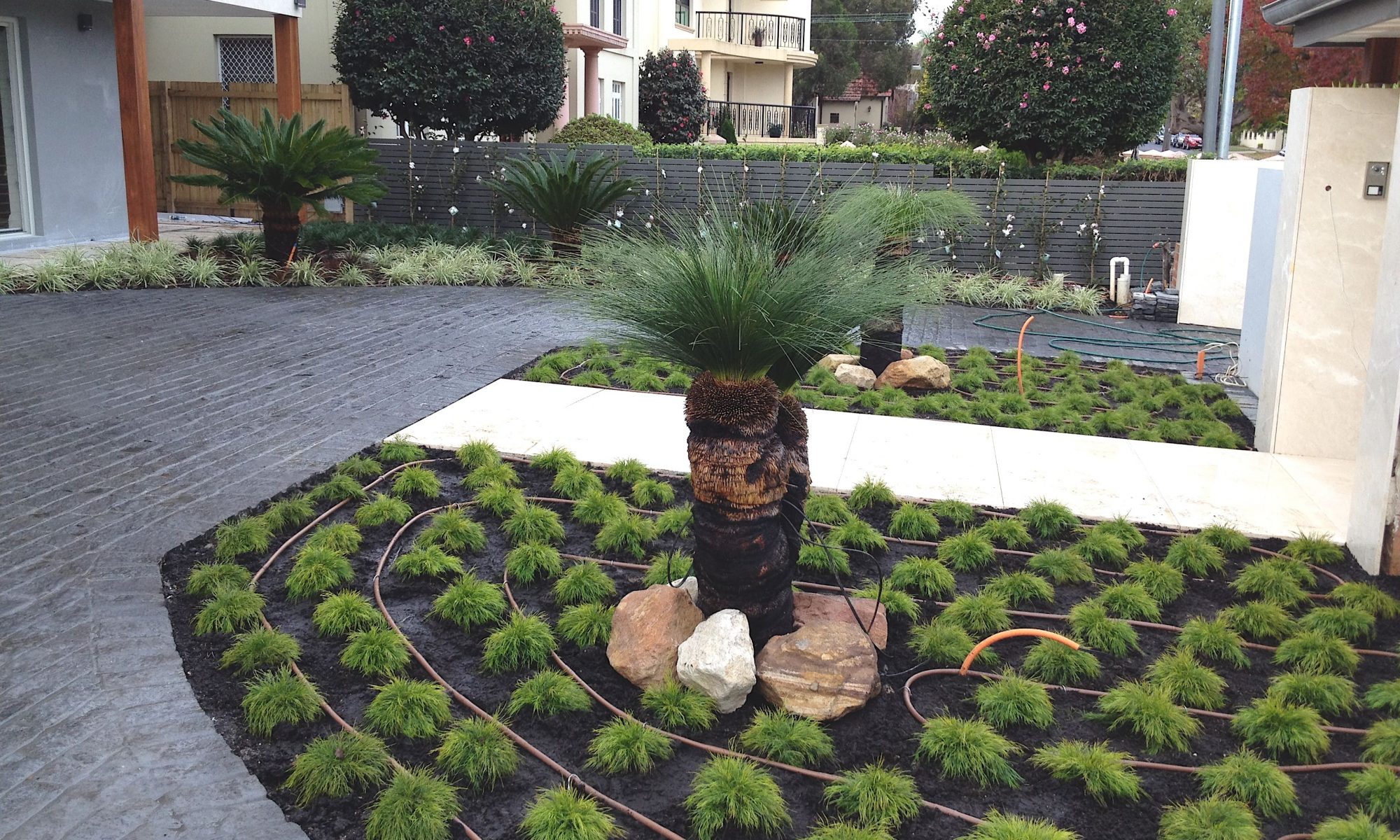When designing landscapes that are both highly functional and aesthetically pleasing, stormwater management should always be front of mind. Whether your landscape will be used in a residential, commercial or civil setting, you must consider how your creation will deal with heavy rainfall. Failure to do so can convert an otherwise perfect landscape design into somewhere that delivers a poor user experience at best and presents significant dangers at worst.
The key is to integrate stormwater management into the landscape in a subtle but still effective way. Achieving this will require working with stormwater management experts that understand the fundamentals, have up-to-date plants, know the local climate and are experienced in delivering end-to-end projects.
As a professional landscaping company in Sydney, here we are recommending some practical and aesthetically pleasing ways to integrate stormwater management into your landscape. It will also help to get you thinking about how this process can work in practice.
- Try to emulate natural landscape features
- Be aware of parking spaces
- Look on either side of your walkways
- Direct water away from structures
Let’s dive into each and evaluate the factors to consider before you plan for storm-water management in your existing landscape design.
1. Try to emulate natural landscape features
The natural environment does well at managing the effects of stormwater, and we can learn a lot by recreating natural landscape features in both residential and commercial landscape designs.
Great examples come in the form of dry creeks, also sometimes referred to as swales. These are narrow linear depressions that can capture rainfall and control the direction of its flow. The efficacy of these features can be enhanced by populating them with local native flora, ideally species that can be found in natural creeks. These plants will help reduce erosion and absorb some water themselves.
Dry creeks can be seamlessly incorporated into your landscape design and often add to its aesthetic appeal and functionality. You must talk to the appropriate authorities first to find an appropriate discharge location for your dry creek.
2. Be aware of parking spaces
Any large stretches of impervious surface, such as concrete car parks, can represent potential problems in stormwater management. These spaces interrupt the natural hydrological cycle and, without proper care, can cause issues such as urban flooding.
A few tips when it comes to stormwater management for car parks include:
- Installing curb cuts: curb cuts help the water escape into the surrounding landscape and prevent it from building up on the car park surface. Separate wheel stops, as opposed to one continuous wheel stop, are another way of achieving this.
- Considering erosion control: cobbles can be highly effective in preventing erosion from heavy rains. Cobbles must be installed at locations of concentrated flow, meaning such areas should be identified from the start of the project.
3. Look on either side of your walkways
While your focus may be on creating walkways that allow people to move quickly and logically through your landscape, the verges of these walkways are often most important when managing stormwater runoff. This is because, similar to car parks, walkways can be problematic when collecting and retaining stormwater.
Paved areas should be installed directly adjacent to, and slightly elevated from, landscaped zones. By providing a slight grade to the walkway, water can then easily run off into the more porous surrounding substrates. As with car parks, cobbles and climate-adapted plants around the walkway can help reduce erosion from runoff and increase water absorption.
4. Direct water away from structures
Roof runoff is a significant consideration in stormwater management, but fortunately, there are several options to deal with it.
Firstly, try using gravel as the substrate below gutterless roofs. Gravel is better at allowing water to drain than many other substrates and will avoid puddle build-ups.
Rain chains are stylish and functional when reducing the water flow rate from roofs and can be easily integrated into your landscape, especially if you include other ornamental features.
Splash blocks are another tried and tested technique that can be placed underneath the end of a downspout and used to direct water flow away from structures.
The above is by no means an exhaustive list of the ways you can integrate stormwater management into your landscape designs, and the best options for you will depend on the unique requirements of your project. If you’re looking for a landscaping company in Sydney with a track record of delivering effective and tailored solutions, get in touch with Civil and Scape today.


 1300 457 457
1300 457 457 info@civilandscape.com.au
info@civilandscape.com.au